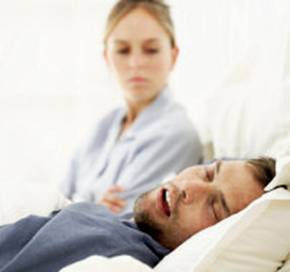Snoring and sleep apnea are common sleep-disordered breathing (SDB) problems that can affect your sleep, health and quality of life.
![]()
Approximately one in every five adults has SDB.
Up to 80% of these are unaware of their condition and remain undiagnosed and untreated.
Snoring and sleep apnea often occur together.
Your airway may:
- Narrow, limiting airflow as you breathe
- Vibrate, commonly heard as snoring
- Collapse, so you stop breathing
This third type of change is called obstructive sleep apnea (OSA). It is the most common type of SDB and each incident may last for 10 seconds or longer.
Sleep-disordered breathing (SDB) is a general term for a sleep disorder with apneas and hypopneas.
- Apnea: a cessation of airflow for ten seconds or longer
- Hypopnea: a 50% or greater decrease in air flow for ten seconds or longer.
 Both apneas and hypopneas cause sleep arousals – moments when an individual wakes enough to resume breathing but not enough to remember any interruption of sleep. Some arousals simply cause the sleeper to shift into a lighter stage of sleep. In either case, the arousal lessens the quality of sleep. Apneas and hypopneas may cause blood oxygen levels to drop.
Both apneas and hypopneas cause sleep arousals – moments when an individual wakes enough to resume breathing but not enough to remember any interruption of sleep. Some arousals simply cause the sleeper to shift into a lighter stage of sleep. In either case, the arousal lessens the quality of sleep. Apneas and hypopneas may cause blood oxygen levels to drop.
Apneas and hypopneas result from upper airway obstruction, either full or partial, or a dysfunction of the body’s automatic drive to breathe.
